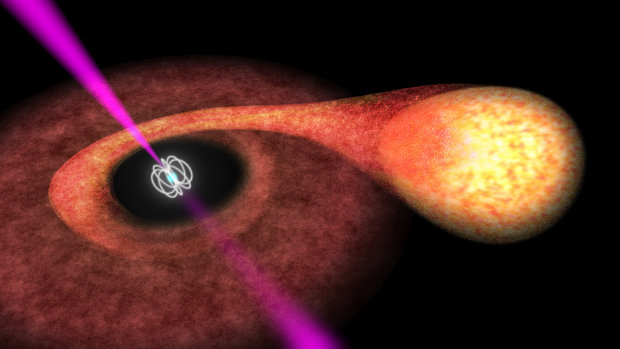
The Yiddish Policemen’s Union by Michael Chabon
The novel “The Yiddish Policemen’s Union” by Michael Chabon was published for the first time in 2007. It won the Hugo, Nebula and Locus awards as the best science fiction […]


The novel “The Yiddish Policemen’s Union” by Michael Chabon was published for the first time in 2007. It won the Hugo, Nebula and Locus awards as the best science fiction […]

The Cygnus spacecraft, which started its journey on September 18, has just docked with the International Space Station. It’s the second belonging to a private company to dock at the International Space Station after the SpaceX Dragon. The success of this mission was vital to Orbital Sciences to get a contract with NASA for eight cargo transport missions to the Station but the two spacecraft are very different, not only in appearance.

An international team has discovered a pulsar called IGR J18245-2452 that oscillates between two types: radio pulsars and X-ray pulsars. This is an important discovery in the study of neutron stars because it shows the evolutionary link between these two types of emissions. The discovery of this phase in the evolution of pulsars confirms a theory that’s more than thirty years old.
On September 27, 1983 Richard Stallman announced the birth of the GNU project. This acronym stands for “GNU’s Not Unix” and indicates a willingness to create a Unix-compatible operating system but with the fundamental characteristic of being free. The point was that no one had to pay for permission to use the GNU system.

The British company Advanced Oncotherapy announced the acquisition of ADAM S.A., a CERN spinoff, meaning a company created to develop commercial applications of technologies initially created for scientific purposes. In this case, it’s a less expensive and more advanced version of the proton beam therapy, a form of radiation therapy used for the treatment of tumors.